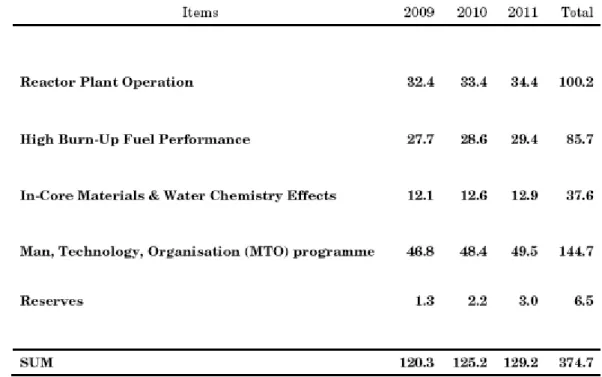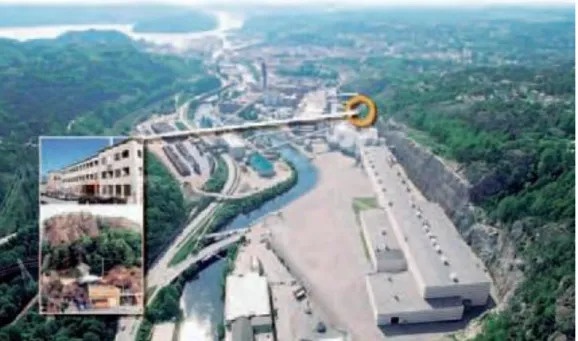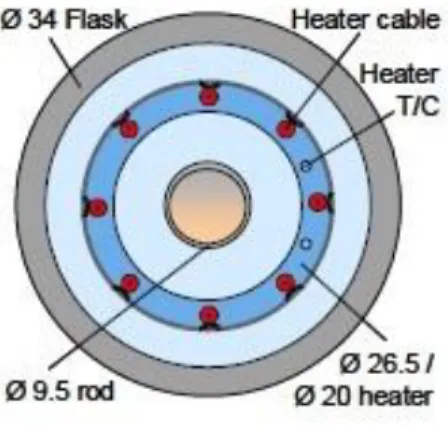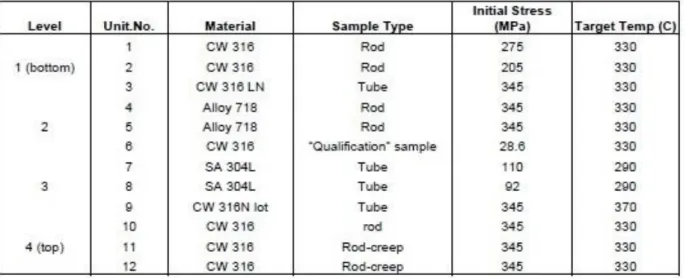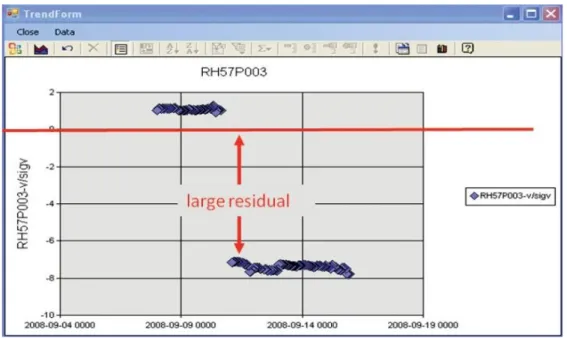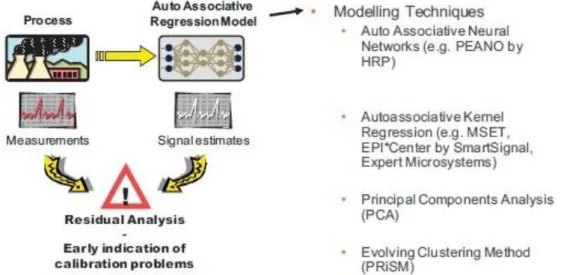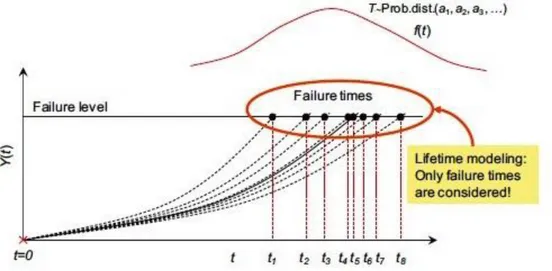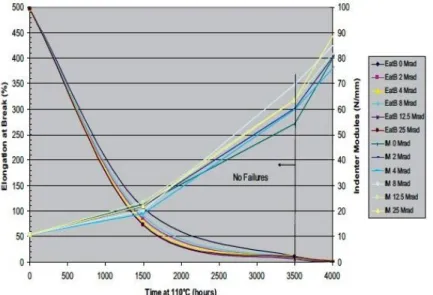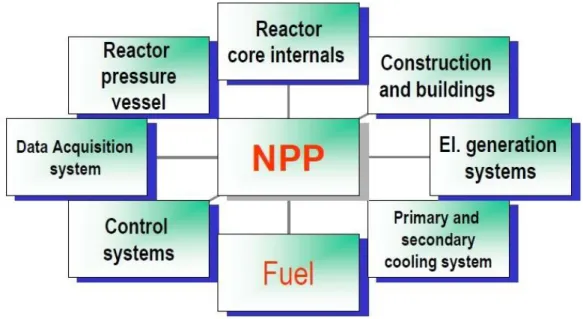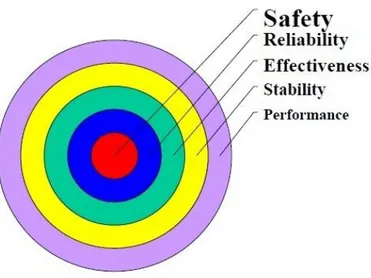Review stato programma Halden Project e definizione Iinee di R&S di interesse nazionale
Descrittori
Tipologia del documento: Collocazione contrattuale:
Rapporto Tecnico
Accordo di programma ENEA·MSE: tema di ricerca "Nuavo nucleare da fissione"
Argomenti trattati: Energia Nucleare, Combustibile e materiali, Strumentaziane e Cantrollo
Sommario
II rilancio della partecipazione italiana al "Halden Reactor Project" deIl'OECD-NEA, centro internazionale di eecellenza nel dominio Fuel&Materials e Instrumentation and Control,
e
nell'intento di ricostituire/sviluppare competenze nei due specifici seltori, a supporto del licensing ed esercizio dei reattori LWR di III Generazione che, nella psospettiva pre-Fukushima e referendum del giugno 2011, iIprogramma nucleare nazionale prevedeva essere installati in lIalia nel corso dei prossimi 20 annLTemi di partieolare attenzione sono il comportamento del combustibile e materiali strutturali in condizioni di alto burn-up e lunghi tempi di residenza in realtore, insieme aile tecnologie di Instrumentation&Control. I due deliverables previsti (LP1.C1 e LP1.C2), sono raccolti in quest'unico documento congiunto ENEA-POllMI-U-Pisa (GRNSPG), che fa il review della stato attuale insieme alia definizione di alcune linee di R&S di possibile interesse nazionale, riferite essenzialmente ai reattori LWR evolutivi, rispettivamente per il Fuel&Materials e Instrumentation &Control. II documento include la proposta ENEA di riapertura della Partecipazione al Programma Halden Project che precede i due contributi POLIMI e Universita di Pisa.
Note:
Rapporto relativo allavoro svolto in collaborazione ENEA-Politecnico di Milano-Universita di Pisa_SPG,
deliverables LP1-C1 e C2 della linea progettuale LP1- C "Partecipazione Halden Project" dell'AdP ENEA-MSE, PAR 2008-09 "Nuovo Nucleare da Fissione".
Autori: F.Vettraino\ L. Luzzi2, A. Cammi2, M. Adorni3, F. D'Auria3 1) ENEA Bologna 2) CIRTEN POLIMI 3) CIRTEN UNIPI
2
I
I
I
NOME FIRMA --1I
I
I
NOME FIRMAo
I EMISSIONEI
{~
r;
20Q
NOME ~~ FIRMA F. VettrainoAdP ENEA-MSE PAR 2008-09
Nuovo Nucleare da Fissione
LP1. C – Partecipazione Halden Project
Review stato programma Halden Project e definizione
linee di R&S di interesse nazionale
Il rilancio della partecipazione italiana al “Halden Reactor Project” dell’OECD-NEA, centro internazionale di eccellenza nel dominio Fuel&Materials e Instrumentation and Control, è nell’intento di ricostituire/sviluppare competenze nei due specifici settori, a supporto del licensing ed esercizio dei reattori LWR di III
Generazione che, nella psospettiva pre-Fukushima e referendum del giugno 2011, il programma nucleare nazionale prevedeva essere installati in Italia nel corso dei prossimi 20 anni.
Temi di particolare attenzione sono il comportamento del combustibile e materiali strutturali in condizioni di alto burn-up e lunghi tempi di residenza in reattore, insieme alle tecnologie di Instrumentation&Control. I due deliverables previsti (LP1.C1 e LP1.C2), sono raccolti in quest’unico documento congiunto ENEA- POLIMI-U-Pisa (GRNSPG), che fa il review dello stato attuale insieme alla definizione di alcune linee di R&S di possibile interesse nazionale, riferite essenzialmente ai reattori LWR evolutivi, rispettivamente per il Fuel&Materials e Instrumentation &Control. Il documento include la proposta ENEA di riapertura della Partecipazione al Programma Halden Project che precede i due conributi POLIMI e Università di Pisa.
F. Vettraino, ENEA-Bologna
Settembre, 2011
I. PROPOSTADIRILANCIODELLAPARTECIPAZIONEITALIANAAL
PROGRAMMAHALDENPROJECT (ENEA)
II. Identificazione di programmi di R&S di interesse nazionale a supporto dei
reattori LWR evolutivi, nei settori Fuel&Materials e Instrumentation&Control
(POLITECNICO DI MILANO)
III. POTENZIALITÀ DEL REATTORE HALDEN: POSSIBILITÀ SIMULAZIONE DI
Proposta di
PARTECIPAZIONE ENEA AL PROGRAMMA INTERNAZIONALE OECD – NEA HALDEN REACTOR PROJECT (HRP)PER IL TRIENNIO 2009–2011 - Annualità 2011 (ENEA)
1. PREMESSA
2. OBIETTIVI DEL HRP
3. ORGANIZZAZIONE DEL PROGETTO 4. AREE DI ATTIVITÀ
5. PARTECIPANTI 6. FINANZIAMENTO
7. MOTIVAZIONI DELLA PARTECIPAZIONE ITALIANA 8. INTERESSI NAZIONALI E E OBIETTIVI
9. MODALITÀ DI PARTECIPAZIONE E COSTI 10. CONCLUSIONI
Identificazione di programmi di R&S di interesse nazionale a supporto dei reattori LWR evolutivi, nei settori Fuel&Materials e Instrumentation&Control
(POLITECNICO DI MILANO) Executive Summary... 1 INTRODUCTION... 1.1 The Halden Boiling Water Reactor ... 2 1. The Halden Reactor Project Programme ... 2 STATUS OF RESEARCH IN THE FUELS & MATERIALS AREA (Item C1) ... 2.1 R&D issues concerning evolutionary LWRs ... 2.2 Selected items from the HRP fuels sub‐programme... 3 2. Selected items from the HRP materials sub‐programme ... 3 STATUS OF RESEARCH IN THE INSTRUMENTATION & CONTROL AREA (Item C1) ... 3.1 R&D issues concerning evolutionary LWRs ... 2 3. Selected results ... 4 R&D PERSPECTIVES OF INTEREST FOR A NATIONAL PROGRAMME (Item C2) ... 4.1 Fuels & Materials area... .2 4 Instrumentation & Control area ... ACRONYMS...
POTENZIALITÀ’ DEL REATTORE HALDEN:
POSSIBILITÀ’ SIMULAZIONE DI INCIDENTI TIPO LOCA E RIA
(UNIVERSITA’ DI PISA_SPG)
1. Introduzione
2. Des rizione del reattore Hac lden ali 2.1. Informazioni gener 2.2. Sistema “reattore” re 2.3. Configurzione del co 2.4. Stato dell’impianto 3. Programma di test del combustibile nucleare unzionamento 3.1. Condizioni normali di f 3.2. Condizioni incidentali 4. Fenomeni e processi rilevanti per incidenti tipo LOCA 5. Fenomeni e processi rilevanti per incidenti tipo RIA n programma sperimentale interesse nazionale 6. Proposta di u . Conclusioni 7
PARTE I
Proposta di
PARTECIPAZIONE ENEA AL PROGRAMMA INTERNAZIONALE OECD – NEA HALDEN REACTOR PROJECT (HRP)PER IL TRIENNIO 2009–2011 - Annualità 2011 (ENEA)
Proposta di
PARTECIPAZIONE ENEA
AL PROGRAMMA INTERNAZIONALE
OECD – NEA HALDEN REACTOR PROJECT (HRP)
PER IL TRIENNIO 2009–2011 - Annualità 2011
(Allegato all’Ordinanza Commissariale)
F. Vettraino, ENEA-Bologna
11 Aprile 2011
PREMESSA
Il programma di ricerca e sperimentazione Halden Reactor Project (HRP) costituisce uno dei più importanti progetti di R&S sul Nucleare da Fissione promossi dalla OECD-NEA (Nuclear Energy Agency), avviato nel 1958 nell'ambito di un accordo internazionale di collaborazione tecnologica incentrato sulla sicurezza dei reattori nucleari ed in particolare sugli studi e ricerche sul combustibile, i materiali di nocciolo e circuito primario, insieme alla conduzione di attività sperimentali per il miglioramento dei sistemi di controllo reattore.
I programmi-progetti internazionali promossi dalla OECD-NEA, sono mirati a dare risposta a questioni rilevanti per la comunità nucleare attraverso un’attività di ricerca comune svolta da tutti i Paesi aderenti. Essi permettono di migliorare l’interscambio tecnico-scientifico e la cooperazione internazionale, sostengono la continuità operativa di impianti sperimentali ritenuti di interesse primario per la comunità nucleare dei Paesi membri, e supportano il mantenimento dell’esperienza e delle infrastrutture strategiche per l’energia nucleare, facilitando il raggiungimento di risultati comuni attraverso la condivisione dei costi fra i partecipanti. Essi forniscono, inoltre, l’opportunità di accesso a tutte le conoscenze sul nucleare oggetto del Programma Triennale comune (Joint Programme), in un contesto internazionale mirato alla promozione di ulteriori collaborazioni, acquisizioni e miglioramento di conoscenze.
Il Programma è strutturato su due aree principali, Fuel and Materials e MTO (Man Technology
Organization), lo sviluppo delle cui attività si avvalgono di facilities fondamentali quali il reattore
HBWR (Halden Boiling Water Reactor), HAMMLAB (Halden Man Machine Laboratory) e HVRC (Halden Virtual Reality Center), del centro di ricerca di Halden in Norvegia, situato circa 100 chilometri a sud di Oslo.
HRP è cresciuto storicamente intorno al reattore internazionale di ricerca HBWR e utilizzato sin dagli anni ’60 per la sperimentazione dei diversi tipi di combustibile nucleare e materiali destinati alle diverse tipologie di reattori esistenti. Il reattore, della potenza massima di 25 MWt, è moderato ad acqua pesante e refrigerato ad acqua bollente, alla pressione di 33,3 bar ed una temperatura di uscita di 240 °C, è collocato all’interno di un tunnel scavato in una formazione rocciosa di granito tipico della Scandinavia, non lontano da una grande cartiera alla quale fornisce una parte rilevante del calore di processo sotto forma di vapore.
Per l’Italia che ha deciso di rilanciare concretamente l’opzione nucleare, con l’obiettivo di mettere in servizio la prima centrale nucleare all’orizzonte 2020, la riapertura della partecipazione al Halden Reactor Project permetterà di avvalersi dell’esperienza di un Centro internazionale di eccellenza nel dominio Fuel&Materials e Instrumentation and Control, a supporto dell’esercizio sicuro ed efficace, e ancor prima del licensing, dei reattori di III Generazione attesi essere installati nel Paese nel corso dei prossimi dieci-vent’anni.
L’Italia ha partecipato stabilmente a HRP dalle origini fino all’inizio degli anni ’90 quando la partecipazione fu interrotta in conseguenza degli effetti del referendum del novembre del 1987. La partecipazione fu ripresa verso la metà degli anni ’90 e terminata nuovamente a fine 2002.
OBIETTIVI DEL HRP
L’obiettivo primario del Halden Reactor Project è quello di produrre e trasferire conoscenze, dati, risultati e prodotti rilevanti per l’esercizio sicuro ed efficiente degli impianti nucleari, ivi incluso gli aspetti di maintenance e decommisssioning, attraverso la collaborazione di una ampia comunità internazionale, condotta e sviluppata sulla base della ripartizione dei costi fra partecipanti.
ORGANIZZAZIONE DEL PROGETTO
Il Progetto opera sulla base di un Programma Comune triennale - Joint Programme - , sottoscritto dai partecipanti, sotto gli auspici della OECD-NEA (Nuclear Energy Agency). Il programma tecnico-scientifico è definito in accordo a criteri prioritari concordati dalle stesse organizzazioni partecipanti. L’esecuzione del Programma viene monitorato dal Halden Programme Group (HPG) che si riunisce due volte l’anno e da un Board internazionale, Halden Board of Management (HBM), che si riunisce due volte l’anno anch’esso. I risultati sono trasferiti ai partecipanti sotto forma di reports, data files e computer programs.
La partecipazione al HRP avviene come Paese Membro (Member Party) o Associated Party.
E’ prevista, tuttavia, anche la possibilità di partecipazioni bilaterali con quei Paesi o organizzazioni che possono avere esigenze specifiche da perseguire al di fuori del Joint Programme.
L’invio di personale tecnico-scientifico dei paesi/organizzazioni partecipanti, a lavorare direttamente presso il Progetto, attraverso la formula del “secondement”, favorisce la formazione e il trasferimento delle conoscenze sviluppate.
AREE DI ATTIVITÀ
Il Progetto opera su due aree di attività, Fuel&Materials e MTO, ove gli scopi principali perseguiti sono:
Fuel and Materials
- Fuel safety and reliability under normal operation conditions - Fuel behavior under demanding operation conditions - Operational margins
- Fuel behavior under accident scenarios - Innovative fuels
--- ‐ Plant aging issues
‐ Internals irradiation assisted stress corrosion cracking ‐ Creep and stress relaxation of in-vessel materials ‐ Pressure vessel integrity studies
- Human reliability
- Human and organizational factors (includes decommissioning)
- Control center design and evaluation
- Outage and field work, including decommissioning
---
‐ Software systems dependability
‐ Operational support of digital system
‐ Condition monitoring and maintenance support
PARTECIPANTI
E’ attualmente in corso il Programma triennale 2009-11 che vede la partecipazione di 18 Paesi, con in testa quelli più industrializzati nei quali l’energia nucleare rappresenta una realtà di dimensioni rilevanti (Tab.1). I Paesi Membri (Member Parties) sono, oltre alla Norvegia, Stati Uniti, Giappone, Francia, Germania, Regno Unito, Spagna, Belgio, Danimarca, Finlandia, Svezia, Svizzera, Corea del Sud, Russia, Ungheria, Rep. Ceca, Slovacchia e Kazakstan. Ai Paesi Membri si aggiunge un numero di istituzioni pubbliche e private, dell’industria e della ricerca, di vari paesi (Associated Parties).
FINANZIAMENTO
Il budget totale, per il triennio 2009-2011 (v. Tab. 2), ammonta a 374.7 milioni di NOK (circa 44.4 milioni di Euro) di cui 317.1 milioni di NOK provengono dai Paesi membri e 57.6 milioni di NOK dagli Associated Parties. La Norvegia, come Paese Membro, contribuisce con 132 Milioni NOK (35% del totale).
MOTIVAZIONI DELLA PARTECIPAZIONE ITALIANA
Il rilancio dell’opzione nucleare in Italia riporta in primo piano l’interesse e necessità a partecipare a programmi internazionali come HRP al fine di ricostituire le condizioni per lo sviluppo delle competenze in settori importanti come il Fuel&Materials e Instrumentation and Control. In accordo a quanto riportato nell’AdP ENEA-MSE (PAR 2008-09), “il rilancio della partecipazione italiana al Halden Reactor Project permetterà di avvalersi dell’esperienza di un Centro internazionale di eccellenza nel dominio
Fuel&Materials e Instrumentation and Control, a supporto dell’esercizio sicuro ed efficace dei reattori
attuali e futuri. Temi di particolare attenzione sono il comportamento del combustibile e materiali strutturali in condizioni di alto burn-up e lunghi tempi di residenza in reattore, insieme alle tecnologie digitalizzate Man Machine Interface (MMI) per il controllo reattore. La partecipazione offre anche l’opportunità di scuola/training per giovani ricercatori, insieme a quella di agire quale riferimento di base per lo sviluppo di un simulatore ingegneristico in ENEA“.
La partecipazione ad HRP è attesa avere, pertanto, ricadute benefiche sia sul processo di formazione delle nuove risorse umane di cui il programma nucleare nazionale ha bisogno, nonché sul ruolo di possibile TSO (Technical Support Organization) nei confronti dell’Autorità di Sicurezza Nucleare, che l’ENEA prevede di poter svolgere.
INTERESSI NAZIONALI E E OBIETTIVI
In accordo a quanto sopra riportato, l’interesse nazionale al rilancio della partecipazione italiana ad Halden Project per il 2011, è rivolto ai seguenti obiettivi prioritari:
Area Fuel&Materials
‐ Stato su progettazione, comportamento e prestazioni del combustibile nucleare e materiali
strutturali in condizioni operative rilevanti per i reattori LWR di III Generazione.
‐ Definizione di linee di analisi, ricerca e sviluppo di più specifico interesse nazionale a
supporto dei reattori LWR III Generazione (EPR, AP1000), e in particolare.
o combustibili UOX ad alto arricchimento e MOX per l’alto burn-up (>60 MWd/kg), combustibili e materilai di guaina innovativi, risposta del combustibile in condizioni di alto burnup, in regime di funzionamento normale e incidentale
o comportamento dei materiali strutturali in corso di vita (ageing effect) o modelli di fuel rod design and performance
o aspetti di back-end del ciclo combustibile (tecniche innovative di gestione e smaltimento del combustibile irraggiato e dei rifiuti nucleari, caratterizzazione, processi di trattamento e condizionamento, trasporto di materiali nucleari, trogetto concettuale del deposito e sitologia, analisi di sicurezza, addestramento degli operatori con tecniche avanzate di simulazione)
Area MTO (Instrumentation&Control)
‐ Review generale riguardanti lo stato dell’arte dell’ Instrumentation and Control
‐ Definizione di linee di analisi, ricerca e sviluppo di più specifico interesse nazionale, tra cui:
o Nuovi requisiti per la sensoristica, la strumentazione e controllo derivanti dalle caratteristiche della nuova generazione di reattori nucleari (evolutivi/ innovativi) o Sistema di automazione, controllo e supervisione avanzati (controllo
remotizzato e supervisionato da sale manovra digitali e multi-unità)
o Utilizzo delle tecnologie di Realtà Virtuale per la progettazione, pianificazione delle attività di manutenzione, visualizzazione del processo, simulazione e addestramento degli operatori.
o Supporto allo sviluppo di un Simulatore ingegneristico di reattori evolutivi LWR in ENEA
MODALITÀ DI PARTECIPAZIONE E COSTI
Le risorse finanziarie disponibili sono quelle previste nell’AdP ENEA-MSE (PAR2008-09) che permettono di riaprire la partecipazione per l’annualità 2011, ultima del Programma 2009-11, sotto la formula di Associated Partner e con ipotesi di costo a carico esclusivo ENEA (v. Tab. 3 ).
Questo nella prospettiva di un consolidamento della partecipazione a partire dal prossimo
più allargato che si ritiene debba comprendere, insieme ad ENEA, Università (CIRTEN e possibili altre Università), Industria (Ansaldo N., Mangiarotti Nuclear, SOGIN, RSE SpA, Softeco, Distretto Tecnologico Ligure), Utilities (ENEL), Autorità Sicurezza Nucleare (ASN).
Si prevede che nel corso della partecipazione all’annualità 2011, due ricercatori ENEA, uno per ciascuna delle due aree di attività, possano essere inviati temporaneamente presso HRP sotto la formula del “secondement” e/o quale “in-kind contribution”.
CONCLUSIONI
A motivo sia delle significative ricadute tecnologiche che si attendono dalle attività previste dal programma HRP, sia delle opportunità di uteriori possibili collaborazioni, anche bilaterali con centri di ricerca di altri Paesi membri di HRP, si propone che l'ENEA riprenda la sua partecipazione al programma HRP a partire dal triennio 2009–2011 (ultima annualità) in corso, nella prospettiva di esplorare e preparare le condizioni per la continuità della partecipazione sin dal prossimo triennio 2012-2014.
Tab. 1 - Halden Project Participants (2009- 2011)
• Norway IFE - Institutt for energiteknikk
• Belgium SCK/CEN - Belgian Nuclear Research Centre • Denmark Risø DTU
• Finland TYÖ – JA ELINKEINO-MINISTERIÖ - Ministry of Employment and Economy, operated
by VTT - Includes Finnish utilities
• France EDF - Electricité de France - IRSN is associated party
- CEA membership under discussion
• Germany GRS - Gesellschaft für Anlagen- und Reaktorsicherheit mbH - Includes German utilities and AREVA
• Japan JNES - Japan Nuclear Energy Safety Organization Japan Associated Parties
- JAEA, Japan Atomic Energy Agency - CRIEPI (incl. Toshiba and 11 utilities) - Mitsubishi Nuclear Fuel (incl. MHI)
• Korea KAERI - Korean Atomic Energy Research Institute
- Includes the Korean utility (KEPCO) and the fuel vendor (KNF)
• Spain CIEMAT - Centro de Investigaciones Energéticas, Medioambientales y Tecnológicas ‐ Includes the Spanish safety authority (CSN) fuel vendor (ENUSA)
• Sweden SSM - Swedish Radiation Safety Authority - Includes the Swedish fuel vendor (W) and utilities • Switzerland ENSI - Swiss Federal Nuclear Safety Inspectorate
- Includes the Swiss utilities and nuclear research centre (PSI) • UK NNL – National Nuclear Laboratory
- Includes UK utilities and safety authority (Rolls‐Royce under discussion) • USA US NRC - United States Nuclear Regulatory Commission
USA Associated parties:
- GE/ GNF ‐ Global Nuclear Fuel
- Westinghouse Electric Power Company - EPRI ‐ Electric Power Research Institute - DOE – US Department of Energy
• Czech Rep. NRI- Nuclear Research Institute, includes Czech utilities and safety authority
• Slovak Rep. VUJESlovak Nuclear Power Plant Research Institute, includes Slovak utilities
• Hungary KFKI Hungarian Academy of Sciences, utilities and safety authority
• Russia “TVEL” JSC Russian associated parties - Research Centre “Kurchatov Institute”, - Research Institute VNIIAES • Kazakhstan Ulba, Fuel manufacturing company Pag.7 di 8
Pag.8 di 8 Tab. 2 - Ripartizione delle spese totali del HRP-Joint Programme
per il periodo 1.1.2009-31.12.2011
Tab. 3 - Schema Budget Partecipazione ENEA e gruppo Interesse Italia
Costo Annuale (K€) Totale
Partecipante (K€) Organizzazione 2011 2012 2013 2014 ENEA (associated partner) 80 - - - 80 Gruppo Interesse Nazionale (associated
partner con ENEA) *
- - - - -
Totale 80 - - - 80
PARTE II
Identificazione di programmi di R&S di interesse nazionale a supporto dei reattori LWR evolutivi, nei settori Fuel&Materials e Instrumentation&Control
Consorzio Interuniversitario per la Ricerca TEcnologica Nucleare
POLITECNICODIMILANO
DIPARTIMENTO DI ENERGIA, Sezione INGEGNERIA NUCLEARE-CeSNEF
Identificazione di programmi di R&S di interesse
nazionale a supporto dei reattori LWR evolutivi, nei
settori Fuel&Materials e Instrumentation&Control
L. Luzzi, A. Cammi
CERSE-POLIMI RL-1352/2011
Milano, settembre 2011
Lavoro svolto in esecuzione della linea progettuale LP1– punto C1+C2
AdP MSE‐ENEA “Ricerca di Sistema Elettrico” - PAR2008-09
LP1.C1+C2 - 2 - CERSE-POLIMI RL-1352/2011
INDEX
Executive Summary ... 3
1 INTRODUCTION ... 5
1.1 The Halden Boiling Water Reactor ... 5
1.2 The Halden Reactor Project Programme ... 8
2 STATUS OF RESEARCH IN THE FUELS & MATERIALS AREA (Item C1) ... 13
2.1 R&D issues concerning evolutionary LWRs ... 13
2.2 Selected items from the HRP fuels sub-programme ... 14
2.3 Selected items from the HRP materials sub-programme ... 21
3 STATUS OF RESEARCH IN THE INSTRUMENTATION & CONTROL AREA (Item C1) ... 25
3.1 R&D issues concerning evolutionary LWRs ... 25
3.2 Selected results ... 25
4 R&D PERSPECTIVES OF INTEREST FOR A NATIONAL PROGRAMME (Item C2) ... 45
4.1 Fuels & Materials area... 46
4.2 Instrumentation & Control area ... 52
LP1.C1+C2 - 3 - CERSE-POLIMI RL-1352/2011
E
XECUTIVES
UMMARYThe Halden Reactor Project (HRP) has been in operation for more than 50 years and is the largest OECD-NEA (Organisation for Economic Cooperation and Development - Nuclear Energy Agency) joint project. It brings together an important international technical network in the areas of nuclear fuel reliability, integrity of reactor internals, plant control/monitoring and human factors. The programme is primarily based on experiments, product developments and analyses carried out at the Halden Boiling Water Reactor (HBWR) in Norway, and is supported by 130 organisations in 18 countries. While offering a stable and well-experienced organisation, the technical infrastructure and the objectives of the Halden Reactor Project have undergone substantial upgrades and continual adaptation to users' needs over the years. The present report focuses on the two following areas of research: Fuels & Materials (F&M), and Instrumentation & Control (I&C). More specifically, within the HRP context, R&D activities in the F&M area include: fuel assessments in postulated accident conditions, investigations in the high and very high burn-up range (both under normal operating conditions and transients), performance analysis of modern Zircaloy materials, plant lifetime assessments related to the reliability of reactor internals materials (e.g., embrittlement and cracking behaviour). As to the R&D activities carried out in the HRP context on plant control and monitoring, they pertain to verification and upgrades of systems for signal validation, performance monitoring, plant diagnostics and support, and alarm handling. The latter belongs to the Human Factor programme, in the more general framework of the Man Technology Organisation (MTO), which is out of the scope of the present report.
In this report, after a brief introduction about the HBWR and the recent HRP Programmes, the status of research in both the F&M and I&C areas is first presented - Item C1. In particular, the most relevant studies carried out during the last HRP Research Programme (2009-2011) are outlined. On this basis, the R&D perspectives of interest for a possible Italian National Programme are therefore briefly discussed, in terms of development and qualification process for both the F&M and I&C areas - Item C2. Throughout the report, close reference is made to the issues concerning evolutionary LWRs.
For the sake of clarity and convenience, the above mentioned HRP Programme in the Fuel & Materials is divided into the fuels sub-programme and the materials sub-programme, and the corresponding issues are reported in a synoptic way. The HRP fuels sub-programme was aimed to determine fuel safety and operational margins for use in design and licensing by studying: (i) gas release behaviour from fuel under irradiation; (ii) fuel thermo-mechanical performance under irradiation at high burn-ups; (iii) fuel behaviour under loss of coolant accident (LOCA) scenarios; and (iv) fuel behaviour under demanding operation conditions, mainly with reference to PCMI (pellet-clad-mechanical-interaction), cladding transient creep, cladding corrosion and hydriding. The investigations concerned fuels in a variety of conditions relevant to operation, licensing and use in Light Water Reactors (PWR, BWR, VVER) - i.e., standard UO2,
MOX, Gd and Cr bearing UO2 fuel pellets - and M5, ZIRLO, E110 and M-MDA fuel cladding as well as Zircaloy-4 and
Zircaloy-2. The HRP materials sub-programme was aimed at contributing to the knowledge of plant ageing and degradation for lifetime extension by: (i) extending the materials database on crack initiation and growth behaviour; (ii) contributing to the understanding of irradiation assisted stress corrosion cracking (IASCC) behaviour; (iii) studying irradiation induced changes in component mechanical behaviour; and (iv) determining the effectiveness of ageing and degradation countermeasures. In the present report, selected items from the HRP materials sub-programme are
LP1.C1+C2 - 4 - CERSE-POLIMI RL-1352/2011
presented, according to the following issues: IASCC of BWR and PWR reactor internals material; irradiation enhanced creep and stress relaxation; and reactor pressure vessel embrittlement.
During the 2009-11 HRP Programme, several progresses were achieved also in the Instrumentation & Control area. They mainly concerned: (i) the development of in-core instrumentation for measuring all key parameters for fuel studies, such as fission gas release, fuel temperature, fuel swelling, cladding creep; (ii) the definition of physics-based models for condition monitoring; (iii) the definition of methods for plant-wide sensor validation; (iv) the refinement of ageing and condition-based models for remaining useful life estimation; and (v) cable ageing assessment.
LP1.C1+C2 - 5 - CERSE-POLIMI RL-1352/2011
1 INTRODUCTION
In the sequel, a brief introduction on the main features of the Halden Boiling Water Reactor (HBWR) is provided together with a general overview of the Halden Reactor Project (HRP) Programme in both the areas of Fuels & Materials (F&M) and Man Technology Organisation (MTO).
1.1 The Halden Boiling Water Reactor
Reactor site
The Halden Boiling Heavy Water Reactor is located in Halden, a coastal town in south-east Norway near to the border to Sweden. The reactor hall is situated within a rock hillside on the north bank of the river Tista. The size of the reactor site area is 7000 m2 (Fig. 1).
Fig. 1. Site area of the BHWR in Halden.
Reactor system
The HBWR is a natural circulation boiling heavy water reactor (Fig. 2). The maximum power is 25 MW (thermal), and the water temperature is 240°C, corresponding to an operating pressure of 33.3 bars. Pressurization tests are performed at regular intervals using a pressure of 40 bars.
The reactor pressure vessel is cylindrical with a rounded bottom. It is made of carbon steel and the bottom and the cylindrical portion are clad with stainless steel. The flat reactor lid has individual penetrations for fuel assemblies, control stations and experimental equipment.
LP1.C1+C2 - 6 - CERSE-POLIMI RL-1352/2011
Fig. 2. Simplified flow sheet of the HBWR (on the left), view of the reactor (in the middle) and horizontal section of the core (on the right).
14 tons of heavy water act as coolant and moderator. A mixture of steam and water flows upwards by natural circulation inside the shroud tubes which surround the fuel rods. Steam is collected in the space above the water, while water flows downwards through the moderator and enters the fuel assemblies through the holes in the lower ends of the shroud. The steam flows to two steam transformers where heat is transferred to the light water secondary circuit. Condensate from the steam transformers returns to the reactor by gravity. An external sub-cooler loop is installed to provide experimental variation of void fraction in the fuel assemblies and the moderator, and is also used for heating and cooling purposes.
In the secondary circuit, two circulation pumps pass the water through the steam transformers, a steam drum and a steam generator where steam is produced in the tertiary circuit. The tertiary steam is normally delivered as process steam to the nearby paper mill, but may also be dumped to the river.
There is generally no access to the reactor hall when the reactor is operational, and therefore all control and supervision is carried out from the control room.
Reactor operating conditions
The R&D programme is based on operating the Halden Reactor. A fuel charge consists of a combination of test fuel from organisations in member countries and driver fuel assemblies, which provide reactivity for operating the reactor. Light water, high pressure loops provide facilities for testing under prototypic BWR and PWR conditions. In particular, the HBWR reveals a versatile tool for nuclear fuels and materials investigations, thanks to the following features:
- more than 300 positions individually accessible; - about 110 positions in central core;
LP1.C1+C2 - 7 - CERSE-POLIMI RL-1352/2011
- about 30 positions for experimental purposes (any of 110/300); - height of active core 80 cm;
- usable length within moderator about 160 cm;
- experimental channel Ø:- 70 mm in HBWR moderator, 35-45 mm in pressure flask; - loop systems for simulation of BWR/PWR conditions.
Core description
The core consists of about 110 - 120 fuel assemblies, including the test fuel, in an open hexagonal lattice with a lattice pitch of 130 mm. 30 lattice positions are occupied by control stations. The maximum height of the fuel section is 1710 mm, and the core is reflected by heavy water.
The central position in the core is occupied by an emergency core cooling tube with nozzles, and between eight and fourteen core positions contain pressure flasks for light water, high pressure test loops.
Currently, each driver fuel assembly consists of eight or nine fuel rods with 6% fuel enrichment and standard fuel pellet diameter.
Plant status
The design working pressure of the HBWR pressure vessel is 40 bar with a saturation temperature of 250°C. The hydraulic acceptance pressure test was carried out at 54 bars, 35% above the design pressure. The normal operating pressure is 33.3 bars, with corresponding saturation temperature of 240°C. The stresses in the vessel are low compared with the code requirements. Thermal stresses are also normally low.
There are normally 2-3 main shutdowns per year, dictated primarily by the experimental programmes, and a few additional cooling downs for special tests. The normal heating and cooling rates are 10°C∙h-1. Inspection and recertification pressure tests are performed every 3rd year at 10% overpressure. These pressure tests are performed with water/steam at saturation temperature. According to the requirements set by Norwegian Boiler Authority, the inspection and test programmes include ultrasonic examination of vessel welds, lid, bolts, bottom nozzle and primary system piping, and evaluation of radiation induced material changes.
The bottom nozzle welds and the welds beltline region of the reactor vessel wall are being 100% ultrasonically examined at the inspections. Also the top lid and the flange bolt are being inspected, the bolts 100% by ultrasonic. The primary system piping is subject to inspection by NDT (Non-Destructive Testing) methods. No defect indications in the above mentioned inspections have been found.
The irradiation induced changes in the vessel material are being monitored by material testing every 6th year, flux evaluations and fracture analysis. The Charpy and fracture mechanics test on
LP1.C1+C2 - 8 - CERSE-POLIMI RL-1352/2011
surveillance specimens are performed by VTT Laboratory in Finland, using material specimens with appropriate lead factors in fluence. Flux and fluence assessments enable quantification of the fluence received by the different parts of the vessel, account taken of the changing core loading over the years.
The outcome of the material testing, fluence evaluations, inspections, and pressure testing form the basis for the assessments of vessel integrity. Internationally accepted codes, rules and recommendations are used in a consultative manner. The material tests and the analysis performed indicate that the reactor can be operated safely well beyond year 2020.
1.2 The Halden Reactor Project Programme
The Halden Reactor Project (HRP) has been in operation for more than 50 years and is the largest OECD-NEA (Organisation for Economic Cooperation and Development - Nuclear Energy Agency) joint project. More specifically, the HRP is a joint undertaking of national organisations in 18 countries sponsoring a jointly financed research programme, which provides key information for safety assessments and licensing as well as for the reliable operation of nuclear power stations. The international members of the Halden Project (HP) participate actively in formulating, prioritising and following up the research programmes. This ensures that the work is focused on tasks with direct safety relevance. In the execution of the Programme, the Halden Project maintains close contacts with its member organisations in the participating countries and with NEA-OECD and its relevant working groups. A technical steering committee, the Halden Programme Group (HPG), with members from the participating organisations, approves the annual research programme and oversees the progress of the work. The HRP operates by way of three-year renewable mandates (the current mandate runs until the end of 2011). The Programme is using the Halden Boiling Heavy Water Reactor (HBWR), the Halden Man Machine Laboratory (HAMMLAB) and the Halden Virtual Reality Centre (VRC) for both experimental and modelling work. While offering a stable and well-experienced organisation, the technical infrastructure and the project objectives have undergone substantial upgrades and continual adaptation to users' needs over the years.
Participating countries
- Belgium: Nuclear Research Centre (SCK-CEN) - Czech Rebublic: Nuclear Research Institute (NRI) - Denmark: Risø National Laboratory (Risø)
- Finland: Ministry of Trade and Industry - France: Electricité de France (EdF)
LP1.C1+C2 - 9 - CERSE-POLIMI RL-1352/2011
- Germany: Gesellschaft für Reaktorsicherheit (GRS)
- Hungary: Hungarian Academy of Sciences - Atomic Energy Research Institute - Japan: Japan Atomic Energy Agency (JAEA)
- Kazakhstan: Ulba metallurgival Plant - Norway: Institutt for Energiteknikk (IFE)
- Republic of Korea: Korea Atomic Energy Research Institute (KAERI) - Russia: TVEL
- Slovak Republic: Nuclear Power Plant Research Institute (VUJE)
- Spain: Centro de Investigaciones Energéticas, Medioambientales y Tecnologí - Sweden: Strålsäkerhetsmyndigheten (Swedish Radiation Safety Authority) - Switzerland: Federal Nuclear Safety Inspectorate
- United Kingdom: Nexia Solutions; Health and Safety Executive (HSE) - USA: Office of Nuclear Regulatory Research (at U.S. NRC)
Fuel & Materials (F&M)
The activities in the F&M area provide fundamental knowledge on the properties and behaviour of nuclear fuels and materials under long term use in reactors as well as during transients.
The main goals of the R&D work in the F&M area are to provide data on: - fuel properties needed for design and licensing of high burn-up reactor fuel;
- fuel response to transients, in particular on phenomena occurring during loss-of-coolant accidents (LOCA);
- cladding creep, corrosion and hydriding to determine mechanisms and operational conditions that affect cladding performance, e.g. water chemistry issues;
- stress corrosion cracking of reactor materials at representative stress conditions and water chemistry environments for plant lifetime assessments.
Man Technology Organisation (MTO)
The research in the MTO area (Fig. 3) comprises empirical studies of the interaction between the reactor operators and the supervision and control systems. It also comprises innovative work on Human System Interface (HSI) design and Control Room design. 3D visualization technologies by means of Virtual and Augmented Reality are being developed by the Visual Interface Technologies (VIT) Division. The VIT Division develops the software infrastructure used to support experiments in HAMMLAB, and it also conducts research on topics related to planning, supporting and training field operators, and other applications of visualisation technologies in the plant lifecycle. This
LP1.C1+C2 - 10 - CERSE-POLIMI RL-1352/2011
comprises software designed to support the editing and management of simulated work scenarios in 3D environments (e.g., collaborative training related to safety of work operations).
The MTO research carried out at the Halden Project is based on the Halden Man Machine Laboratory (HAMMLAB). Since its establishment in 1983, HAMMLAB has been a world-wide reference facility for human factor studies and for advices on control room engineering. It provides the basis for studies on the performance of control room operators in complex and automated environments on human factors research and human-computer systems development. HAMMLAB has two advanced and modern nuclear simulators, the HAMBO simulator (BWR, simulates the Forsmark-3 plant in Sweden), and the RIPS simulator (PWR, simulates the Ringhals-3 plant in Sweden). The simulators have capabilities also supporting the proposed programme activities on outages and future plants. HAMMLAB is complemented by the Virtual Reality Centre (VRC) Laboratory, a facility for rapid, interactive, high quality design of control rooms. Tools to assist in verification and validation of such designs as well as tools for maintenance training have been developed.
Fig. 3. The 2010 version of the MTO laboratory facilities (on the left): 1. HAMMLAB; 2. VRC Laboratory; 3. Experimenters Gallery; 4. IO (Integrated Operations) Lab; 5. Separate Test and Integration Lab; 6. Future Plant Laboratory; 7. Human Factors Analysis Room. Various HSI prototypes installed and tested in HAMMLAB (on the right).
The main goals of the R&D work in the MTO area are to:
- provide knowledge on how and why accidents occur, with the aim to prevent them from happening;
LP1.C1+C2 - 11 - CERSE-POLIMI RL-1352/2011
- establish empirical knowledge about human potentials and limitations as operators in a control room setting based on experiments carried out in HAMMLAB and the VRC Laboratory;
- develop advanced information and support systems for use in plant optimization, operation and maintenance;
- develop methods and tools to improve the dependability of software based systems.
In this report, the most relevant studies carried out during the last HRP Programme (2009-2011) are presented (Item C1) in order to establish the basis for the definition of R&D programmes of possible interest for Italy (Item C2). In particular, close reference is made to the issues concerning evolutionary LWRs, and only the Instrumentation & Control (I&C) issues are considered in the context of the more general MTO area (that is out of the scope of the present report).
LP1.C1+C2 - 13 - CERSE-POLIMI RL-1352/2011
2 STATUS
OF
RESEARCH
IN
THE
FUELS
&
MATERIALS
AREA
(I
TEMC1)
In this section, the status of research in the Fuels & Materials area is briefly presented, with close reference to the recent HRP Programme (2009-2011) about the most relevant issues of interest for the evolutionary LWRs. In particular, for the sake of clarity and convenience, the above HRP Programme is divided into the fuels sub-programme and the materials sub-programme, and the corresponding issues are reported in a synoptic way. Both these sub-programmes have been built on existing Halden experience and capabilities to produce a variety of test conditions and coolant environments, while making reliable in-reactor measurement (see Section 3) in order to study phenomena on-line and in-situ. The results from the HRP research programme are in detail reported to the members in the annual status reports. In the sequel, the most important items are summarised, and the activities considered for the next programme period are mentioned.
2.1 R&D issues concerning evolutionary LWRs
HRP fuels sub-programme
The HRP fuels sub-programme was aimed to determine fuel safety and operational margins for use in design and licensing by studying:
- gas release behaviour from fuel under irradiation; - fuel thermo-mechanical behaviour under irradiation; - fuel behaviour under accident scenarios;
- fuel behaviour under demanding operation conditions.
In subsection 2.2, selected items are presented according to the following themes:
- gas release under irradiation – fission gas release behaviour, gas inventory increase, tolerable rod overpressure;
- fuel thermal and mechanical performance - conductivity degradation, densification, swelling, fuel creep, pellet-clad-mechanical-interaction (PCMI);
- Fuel behaviour under accident scenarios - loss of coolant accident (LOCA);
- Demanding operation conditions - power transients, PCMI, cladding transient creep, cladding corrosion and hydriding.
The investigations concerned fuels in use in light water reactors (PWR, BWR, VVER) - i.e., standard UO2, MOX, Gd and Cr bearing UO2 fuel pellets - and M5, ZIRLO, E110 and M-MDA fuel
LP1.C1+C2 - 14 - CERSE-POLIMI RL-1352/2011
HRP materials sub-programme
The HRP materials sub-programme was aimed to contribute to the knowledge of plant ageing and degradation for lifetime extension by:
- extending the materials database on crack initiation and growth behaviour;
- contributing to the understanding of irradiation assisted stress corrosion cracking (IASCC) behaviour;
- studying irradiation induced changes in component mechanical behaviour; - determining the effectiveness of ageing and degradation countermeasures. In subsection 2.3, selected items are presented according to the following issues: - IASCC of core component structural materials;
- irradiation enhanced creep and stress relaxation; - reactor pressure vessel (RPV) embrittlement.
2.2 Selected items from the HRP fuels sub-programme
In the framework of the HRP fuels sub-programme, several experimental activities were carried out with the objective of generating new and improved data on fuel properties and fuel behaviour in the entire burn-up range, under both demanding operation conditions and accident scenarios, and utilising fuel materials representative of the current and near-term expected industry standard. In the sequel, the different items to define the fuel safety and operational margins are presented, mainly focusing the attention on the open issues (currently investigated at Halden and considered for the next HRP Programme period), in the prospect of the definition of R&D programmes of possible interest for Italy (see Section 4), as follows:
- studies related to gas release under irradiation; - thermo-mechanical studies;
- studies on the fuel behaviour under accident scenarios;
- studies on the fuel behaviour under demanding operation conditions. - studies on innovative fuels and claddings.
Studies related to gas release under irradiation
Fission gas release (FGR) and rod pressure increase contribute to limitations of fuel utilisation in LWRs imposed by safety criteria. FGR is linked to and influences fuel temperatures and therefore has a feedback on a number of phenomena. Data starting at zero burn-up are required for new types of fuels (e.g., fuels with additives and modified morphology) and also for Gd-fuel where high concentrations of Gd (>8%) are desirable for application in extended cycle core loading strategies.
LP1.C1+C2 - 15 - CERSE-POLIMI RL-1352/2011
At the same time, more FGR data for high burn-up fuels are needed for fuel behaviour code qualification and to improve their capability to predict steady state operation and transient release. In addition to general release from the matrix, the contribution of release from fuel with high burn-up structure is of special interest. The implications of end-of-life gas inventory on cladding strain and integrity are also issues that needs to be investigated in the future.
A number of participating countries are burning MOX fuel in their reactors as part of their fuel cycle strategy. MOX fuel has to obey the same safety standards as UO2 fuels and has to be
compatible with the overall operational requirements. FGR is a particular issue for MOX fuel due to the higher power at end-of-life compared to UO2 fuel. The resulting rod pressure concern is
amplified by the production and release of helium. In addition to fission gas release, helium release can contribute to as much as 30% of the pressure increase and is therefore an important consideration in safety analyses.
These issues have been, and will continue to be, studied in a number of experiments carried out in the Halden reactor within the HRP Programmes. Many of the tests related to fission gas release will be designed and instrumented in a manner that will provide concurrent data on fission gas release as well as thermo-mechanical properties, and the Project has the capabilities for conducting tests designed both for transient release studies as well as thermal release. Participating organisations contribute to these tests with delivery of fresh, production line and laboratory fuels as well as fuels with high burn-up retrieved from commercial nuclear power stations. The designs of the irradiation rigs are based on successful long-term fuel irradiation experiments with a variety of instrumentation, such as fuel thermocouples, fuel stack or cladding elongation detectors and rod pressure transducers (see subsection 3.2). The instruments provide essential data for the phenomena to be addressed. The ability to re-fabricate and instrument fuel from commercial reactors has been an essential part of the Project’s activities for years, and the tests proposed for the next 3-year programme will rely on the continued utilisation of such fuels.
The experiments related to gas release under irradiation considered for the next programme period (2012-2014) are the following: integral fuel performance studies; a MOX helium release test; an ultra-high burn-up irradiation experiment; cladding lift-off experiments; and several experiments dedicated to FGR release from standard, large grain, gadolinia and chromia fuels as well as BeO bearing fuels.
Thermo-mechanical studies
The development and utilisation of new fuels, whether derived from standard fuels or of completely different pedigree, requires a thorough knowledge of in-core properties and performance. Well qualified data obtained from carefully controlled experiments are needed for modelling and
LP1.C1+C2 - 16 - CERSE-POLIMI RL-1352/2011
safety assessment purposes. Excluding gas release behaviour (covered in the previous paragraph), the aspects that need to be known about are:
- fuel thermal conductivity;
- pellet cladding mechanical interaction (PCMI); - fuel swelling / rod growth;
- fuel creep.
Fuel with gadolinia as a burnable poison is being used or considered in all types of LERs and has thus featured in many experiments performed at Halden., exhibiting a quite different densification and swelling behaviour at beginning of life compared to that of UO2 fuel.
The interactions between the different phenomena, which develop in a fuel rod during irradiation, are complex. In order to obtain a better understanding of the overall fuel performance, the programme proposed for the next period (2012-2014) contains separate effects tests, experiments dedicated to certain fuel types, and integral performance tests on re-fabricated segments. Many of the experiments are also linked to the FGR issues previously described, and all make extensive use of in-core instrumentation such as fuel thermocouples, rod pressure transducers and fuel stack elongation sensors. These instruments typically give reliable data throughout irradiation histories of 5 years or more.
In particular, the experiments related to fuel thermal and mechanical performance considered for the next programme period are the following: separate effects test for studying the fuel thermal conductivity degradation and recovery mechanisms (including innovative fuel types as available); separate effects test for investigating the fission induced creep both in UO2 and MOX fuels;
experiments dedicated to Gd-fuel behaviour, especially for what concerns its densification and swelling at beginning of life, which differs from UO2 fuel behaviour; an experiment dedicated to
VVER fuel behaviour, in order to reach the target burn-up of about 60 MWd/kg with emphasis on thermal performance (excluding FGR); an experiment to investigate the thermal behaviour of modified fuels (of special interest is the thermal performance of beryllium oxide in a UO2 matrix,
that should lead to an higher thermal conductivity and thus lower fuel temperatures); integral fuel performance studies Gd-fuel with a burn-up of about 50 MWd/kg to yield data on fuel temperatures and PCMI, and FGR as well; cladding lift-off experiments, designed to produce data on fuel temperature, fuel swelling and axial gas communication within high burn-up UO2 and MOX fuels.
Studies on the fuel behaviour under accident scenarios
The introduction of new cladding materials and, in particular, the tendency to higher burn-up have generated a need to re-examine the safety criteria for loss-of-coolant accidents (LOCA) and to verify their continued validity. As part of international efforts to this end, the Halden Project has
LP1.C1+C2 - 17 - CERSE-POLIMI RL-1352/2011
implemented a LOCA test series to study the integral in-reactor fuel behaviour under expected and bounding conditions.
The Halden reactor is suited for integral in-pile testing of fuel behaviour under LOCA conditions using single fuel rods. The decay heat is simulated by a low level of nuclear heating, which produces a temperature distribution in the fuel rod similar to the real case (see Fig. 4). Thus a more correct differential fuel-cladding thermal expansion is obtained compared to out-of-reactor tests, where the cladding is heated from outside and more than the fuel.
Fig. 4. Schematic cross section of fuel pin, heater and pressure tube used in HRP LOCA studies.
The objectives of the HRP LOCA test series and the test execution conditions were defined in close cooperation with the HPG and individual member organisations, as follows: (i) measurement of the extent of fuel (fragment) relocation into the ballooned region and evaluation of its possible effect on cladding temperature and oxidation; and (ii) investigation of the extent (if any) of “secondary transient hydriding” on the inner side of the cladding above and below the burst region.
At the time of this writing, seven tests with irradiated fuel segments (burn-up 40÷92 MWd/kg) from commercial NPPs have been carried out. The fourth test of the series caused particular attention since the fuel used in the experiment (92 MWd/kgU) experienced substantial fragmentation and dispersal at temperatures far lower than entailed by the current 1200°C / 17% ECR (equivalent cladding reacted) limit. This feature of strong fragmentation and dispersal potentially present in high burn-up fuel was corroborated by another test with “sibling fuel”.
Different degrees of contamination of the loop system employed in the series were observed from test to test. A procedure has been implemented to quantify the amount of iodine released after ballooning and burst since the source term is important for evaluating the consequences of a LOCA.
LP1.C1+C2 - 18 - CERSE-POLIMI RL-1352/2011
A continuation of the HRP LOCA test series in the next HRP Programme will aim to provide answers to the original objectives as well as new questions arisen from the tests carried out so far:
- when do fuel relocation and fuel dispersal occur and when can they be excluded?
- effects of burn-up, rod pressure, and corrosion (hydrogen) on integral fuel behaviour during LOCA;
- quantification of the source term (iodine release).
Studies on the fuel behaviour under demanding operation conditions
More flexible or commercial operating modes, such as load following, can result in high and variable stresses being imposed on the fuel cladding with resulting high strains accumulating in the cladding. After the fuel cladding has crept down onto the fuel pellet, which is concurrently swelling, and the initial fuel-clad gap is closed, a stress reversal occurs as fuel swelling starts to drive general clad creep-out. Subsequent fuel swelling, fission gas release and power variations affect the applied stress on the cladding in terms of both magnitude and direction. The in-pile creep behaviour of LWR fuel cladding under variable loading conditions is thus important and needs to be addressed in fuel performance codes. General discussion indicates that there are specific areas where modellers continue to require creep data on well characterised material tested under carefully defined in-pile testing conditions, such as primary creep following repeated stress increments and reversals and for material with a high accumulated fast neutron fluence.
With the trend toward increased fuel cycle length and reactor core ratings, fuel can be challenged by the resulting high discharge burn-up and more aggressive thermal-hydraulic conditions (e.g., coolant temperature and void fraction) and water chemistry conditions. Longer fuel cycles together with power up-rates require higher boron concentrations for reactivity control, which, in turn, leads to the increased need of lithium to maintain the optimal water chemistry conditions. Such operation requires beginning of cycle LiOH concentrations above the current industry limit of 3.5 ppm. PWR primary water chemistry is also being optimised to minimise corrosion product release from the surfaces of steam generators and thus out-of-core radiation fields and crud formation on fuel cladding surfaces. Elevated and constant coolant pH is one potential optimisation method. Operation with constant pH 7.3 or 7.4 (maximum lithium concentration 5-6 ppm) has been demonstrated in a commercial PWR; however before more demanding operation conditions can be implemented in PWRs, it is necessary to confirm that they do not have adverse effects on fuel cladding corrosion and hydriding. One concern is to determine whether a so-called cliff edge exists, beyond which operation will be unacceptable.
LP1.C1+C2 - 19 - CERSE-POLIMI RL-1352/2011
Corrosion performance of fuel cladding materials may be limiting under these more demanding conditions, especially in PWRs where an absolute limit of 100 μm oxide is applied, and it has been found that Zircaloy-4 does not always offer sufficient margin. For high duty and extended burn-up applications, several new alloys have been developed and these require comprehensive testing before they can be used in commercial reactors. Both utilities and licensing organisations require the vendor to provide evidence of the corrosion resistance of the materials. The fuel vendor performs the majority of the development work for a new cladding material, varying the chemical composition of the alloy and the manufacturing route, resulting in selection of a small number of candidate materials. It is at this point that in-core testing is required, since in-core corrosion rates are enhanced relative to those measured out-of-reactor.
For burn-ups exceeding 50 MWd/kg, the fuel rim structure is formed and fuel-clad bonding is established. Load follow operation can have strong effects on PCMI and fission gas release. Released fission products can have an effect on fatigue life of the cladding during operations involving a large number of power changes. Further, axial ratcheting as observed in some experiments involving high burn-up fuel may lead to an accumulation of strain increments with a possible impact on cladding integrity. Excessive fuel-clad bonding may also lower the PCMI failure threshold. Regarding PCMI, a mismatch between release and onset of interaction has been observed for shutdown/start-up sequences.
Fuel must continue to satisfy reliability and performance requirements while being exposed to these more demanding operation conditions, and vendors, utilities and regulators all require experimental data to show that safety criteria are met. Such data can be used directly or indirectly (in models and codes), to determine the operating margins during reactor operation and to understand the mechanisms responsible for challenging and weakening the fuel and cladding during irradiation.
All experiments involving the study of cladding behaviour make use of test loops that allow experiments to be performed under representative thermal-hydraulic and water chemistry conditions (i.e., coolant water pressure, temperature and make-up). Since the fuel is also operated under representative linear powers, other parameters such as cladding mid-wall and surface temperatures are also representative. Fast flux levels are maximised where required by surrounding the test fuel with booster fuel rods. All tests are instrumented for measurement of neutron flux and coolant temperature, pressure and flow rate. Test rods are fitted with instrumentation appropriate to the objectives of the experiment.
LP1.C1+C2 - 20 - CERSE-POLIMI RL-1352/2011
The experiments related to fuel behaviour under demanding operation conditions considered for the next programme period are the following: a continuation of the experiment commenced in the 2009-2011 Programme, which contains four test claddings (M5, M-MDA, E110 and ZIRLO), to investigate their steady-state and transient creep behaviour under representative PWR conditions; a continuation of the experiment commenced in the 2009-2011 Programme, which contains six test rods with different claddings (M5, M-MDA-SR and ZIRLO) under irradiation conditions (coolant mass evaporation rate and lithium concentration) more severe than those currently allowed in commercial PWRs, to investigate their corrosion and hydriding behaviour by measurements of oxide thickness using an eddy current proximity probe during reactor outages, with post-irradiation determinations of oxide thickness and morphology and hydrogen pick-up; integral fuel performance studies (conducted in such a manner that FGR and PCMI can be also studied) on test fuel rods manufactured from high burn-up rods of commercial reactors, in order to characterise the power cycling / load follow behaviour of the burn-up fuel.
Studies on innovative fuels and claddings
Innovative materials are being looked into as an option for fuels and cladding, to be employed in evolutionary LWRs as well as in Generation IV reactor types.
For fuels, it is desirable to be able to operate at a lower temperature for a given power output in order to reduce fission gas release and other deleterious effects of high temperature operation. Higher fuel thermal conductivity is a prerequisite for this, and candidate materials include uranium nitride, fuel containing beryllium oxide (possibly in a whisker form), and fuel rods with a liquid metal in the fuel-clad gap. In addition, improved fuel performance may be achieved through careful control of fuel microstructure by producing pellets with a microstructure that varies radially through the pellet such as grain size, Gd-content or enrichment.
For cladding materials, it is desirable to avoid the deleterious effects induced by high residence time in a corrosive and radiation environment such as accelerated creep and growth or hydride embrittlement. Sustained dimensional stability is a prerequisite for this, and SiC could be a suitable cladding material in this respect for ultra high utilisation of uranium fuel. An obvious added advantage of this material is that it is also relatively chemically inert.
Several efforts will be carried out in this area in the next HRP research programme (see also subection 4.1), among which the following ones: (i) integral fuel performance studies of candidate materials, and (ii) characterisation of the in-pile behaviour of SiC cladding. In particular, the integral fuel performance studies will use concurrent measurement of fuel temperature and rod pressure during steady-state conditions to generate data on thermal performance as well as fuel
LP1.C1+C2 - 21 - CERSE-POLIMI RL-1352/2011
densification, swelling and possible fission gas release. Characterisation of the in-pile behaviour of SiC cladding will take place under PWR water chemistry conditions, with unfuelled but sealed segments of the cladding. Non-destructive interim inspections and a final destructive post irradiation examination are envisaged to map the behaviour of the material.
2.3 Selected items from the HRP materials sub-programme
In the framework of the HRP materials sub-programme, several experimental activities were carried out with the objective of investigating the plant ageing and degradation effects on reactor vessel internals as well as the RPV integrity. In the sequel, the main items of such investigations are presented, mainly focusing the attention on the open issues (currently investigated at Halden and considered for the next HRP Programme period), in the prospect of the definition of R&D programmes of possible interest for Italy (see Section 4), as follows:
- irradiation assisted stress corrosion cracking of core component structural materials; - irradiation enhanced creep and stress relaxation;
- reactor pressure vessel embrittlement.
The experimental programme on IASCC was aimed at generating data that provide: a fundamental mechanistic understanding of the phenomenon; predicting behaviour (in particular, the cracking response of irradiated materials); assessing the benefits of countermeasures; and determining the limits of operation for existing materials. An understanding of the processes is considered the key to effective ageing management (i.e., mitigation and/or repair). The majority of the IASCC investigations were performed in loops simulating LWR operating and water chemistry conditions.
Irradiation enhanced creep and stress relaxation are potential degradation mechanisms that may affect core-internals long-term performance. In-pile studies were (and are currently) conducted in inert environments to assess the effects of irradiation and applied load on creep / stress relaxation in materials commonly employed in LWRs.
As to the RPV integrity programme, the Halden Project is now participating, in collaboration with VUJE, in a study aimed at evaluating the use of the small punch test as an alternative method for determining the basic mechanical properties of RPV materials.
Irradiation assisted stress corrosion cracking of core component structural materials
Irradiation assisted stress corrosion cracking (IASCC) occurs under the combined effects of irradiation, stress and a corrosive environment. IASCC is a degradation mechanism that is of
